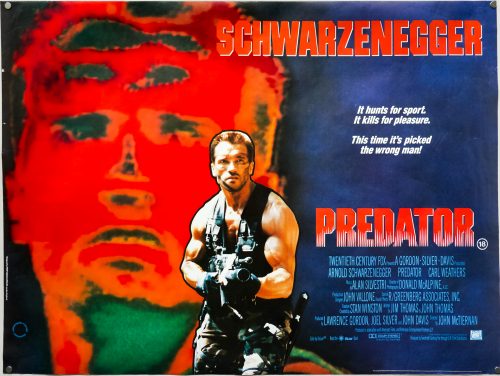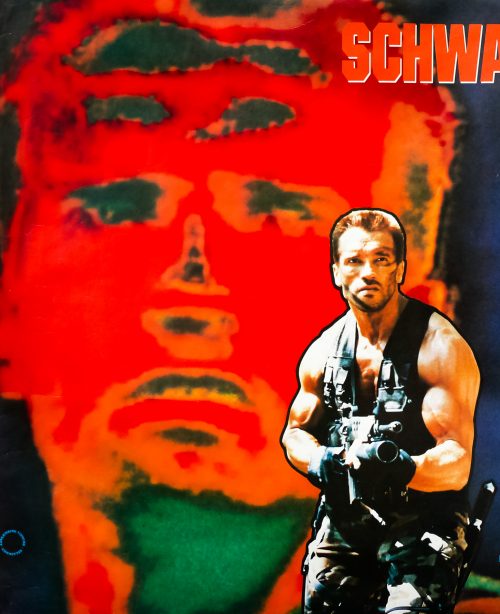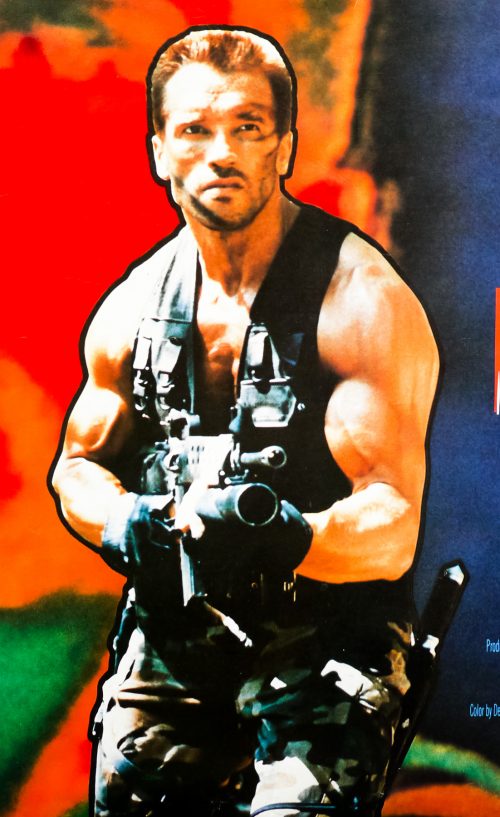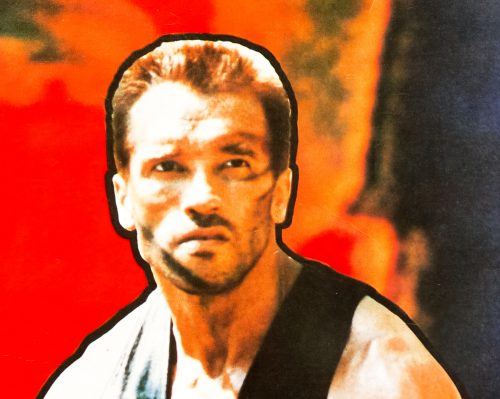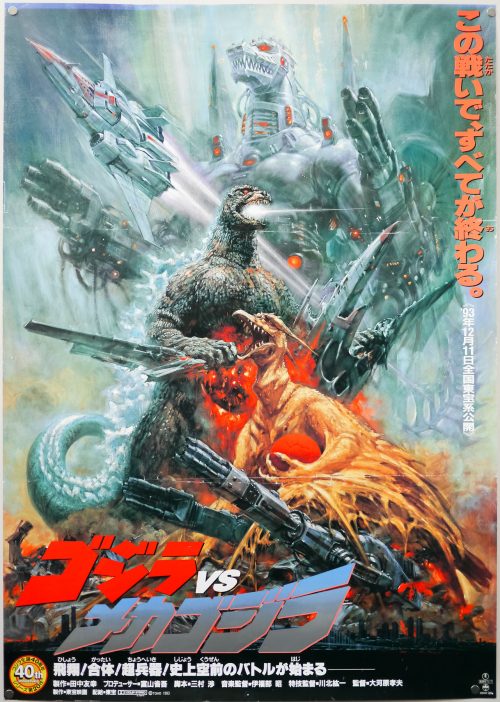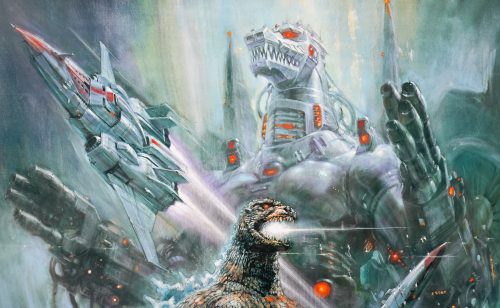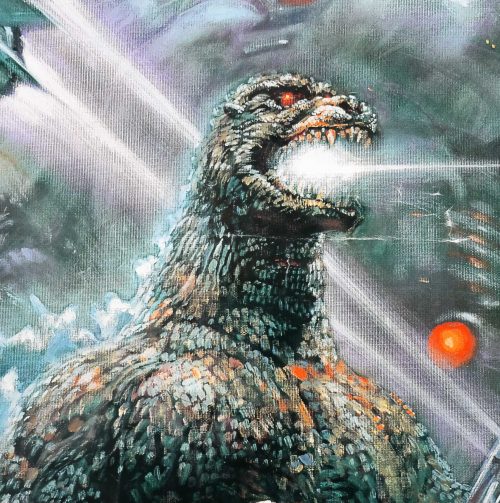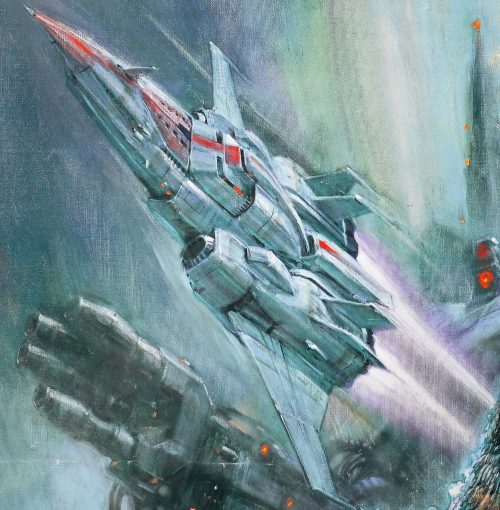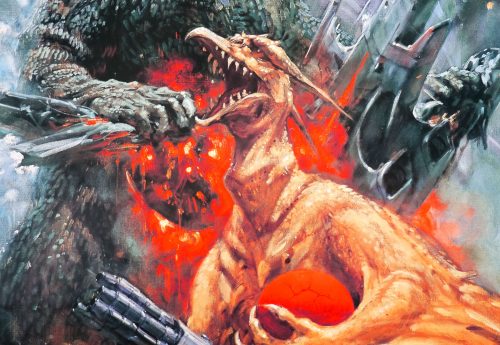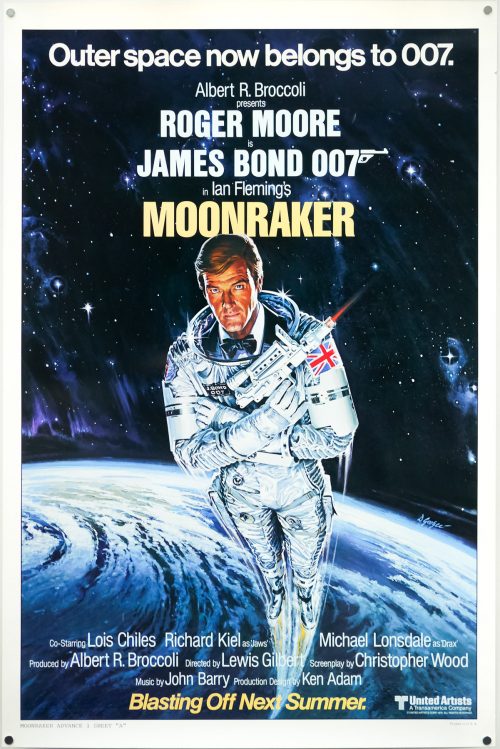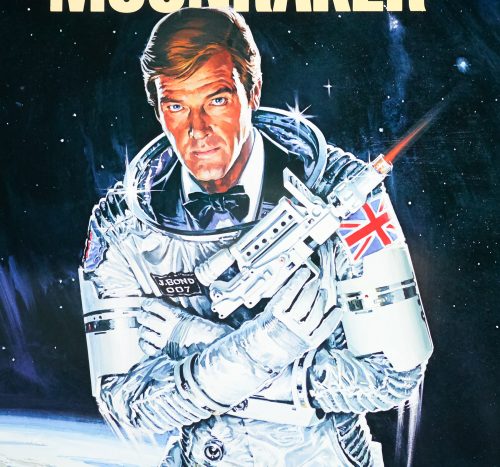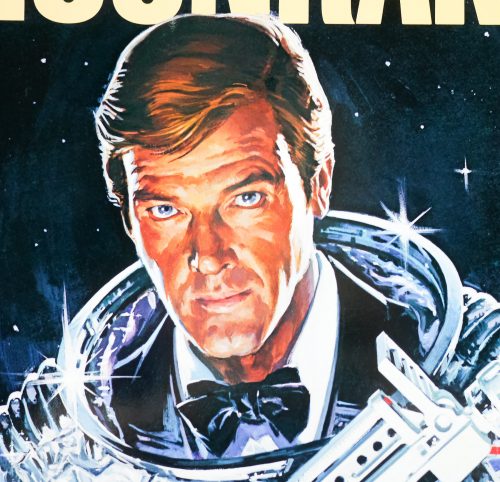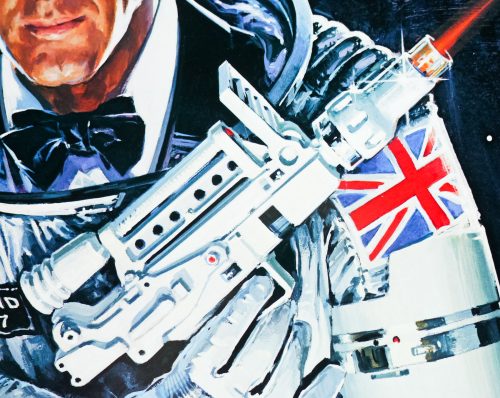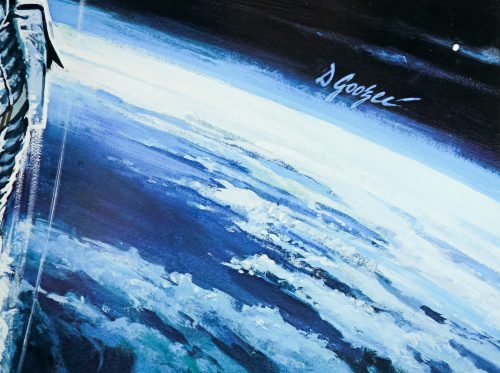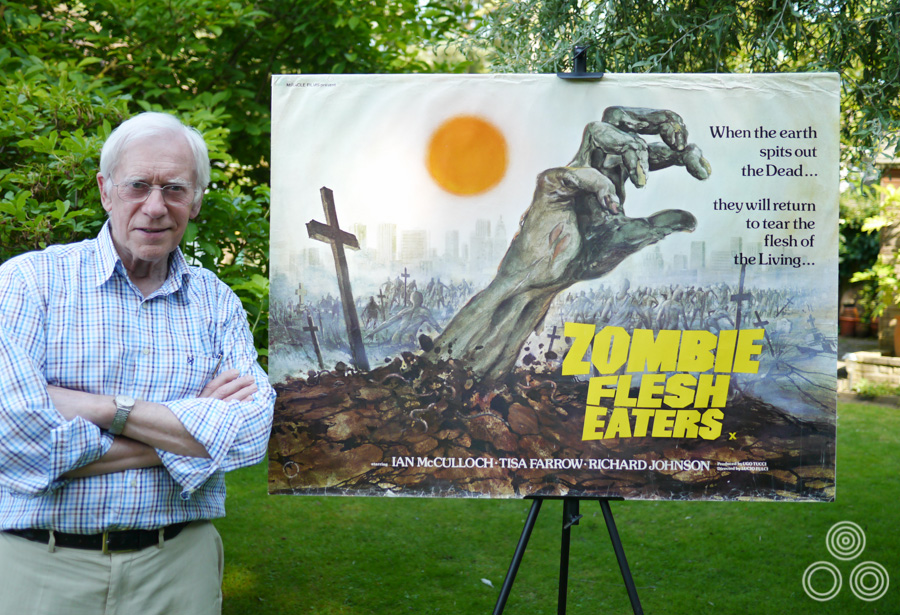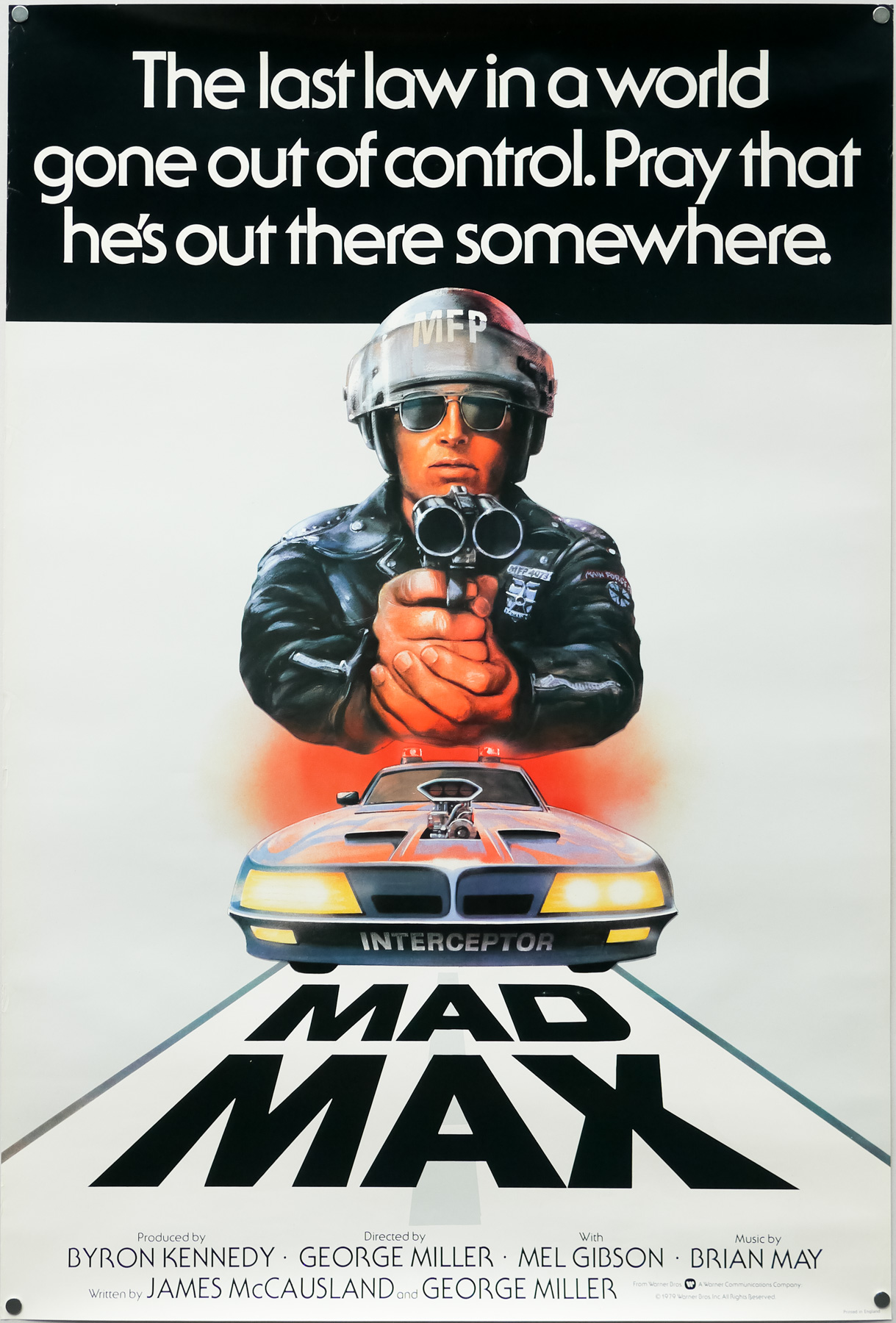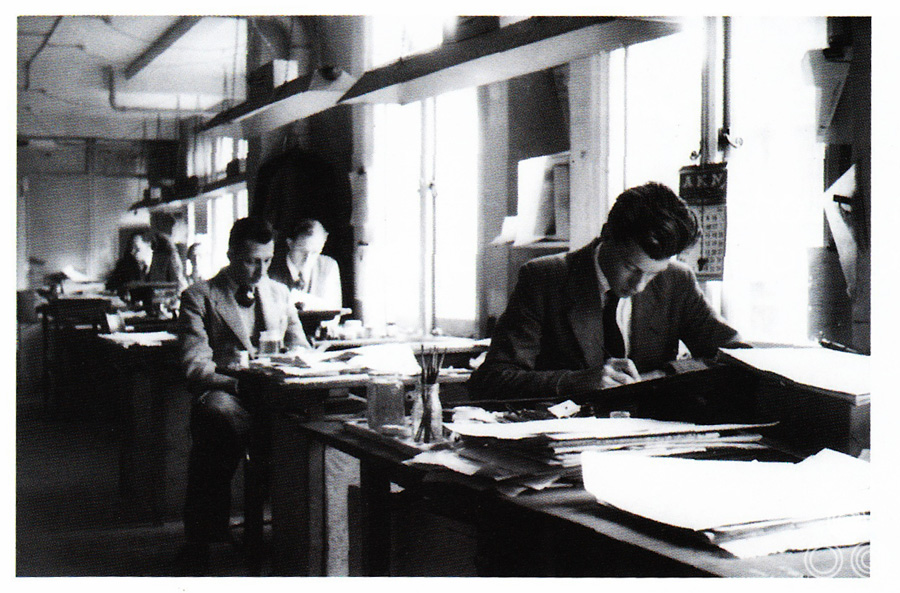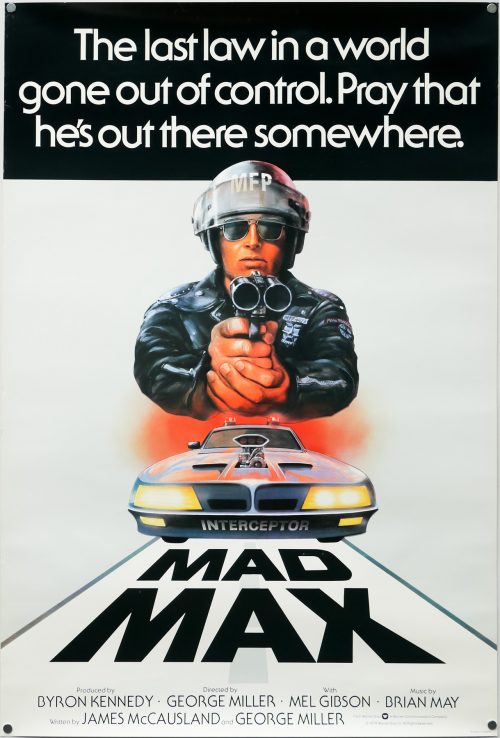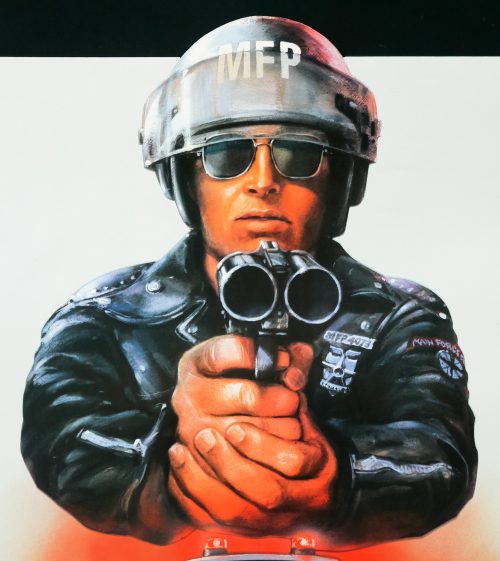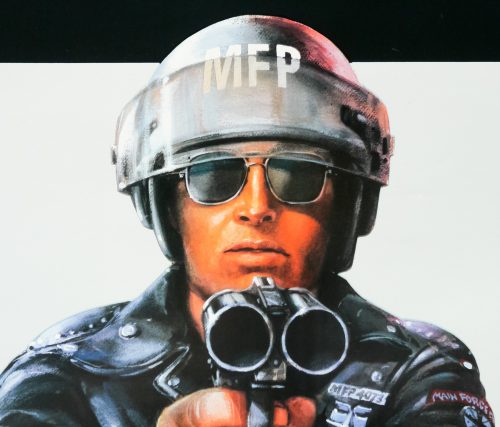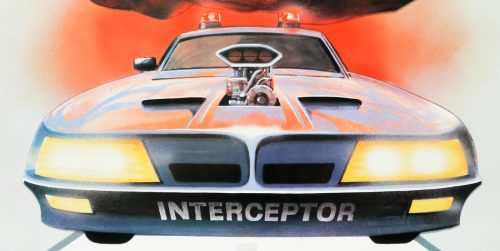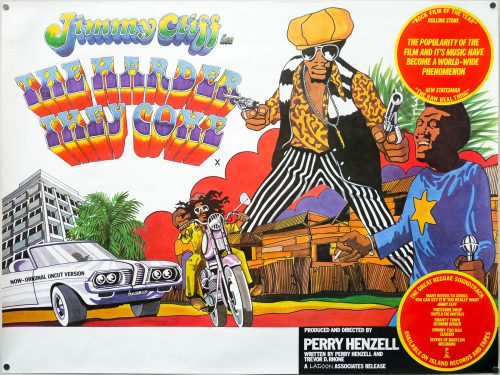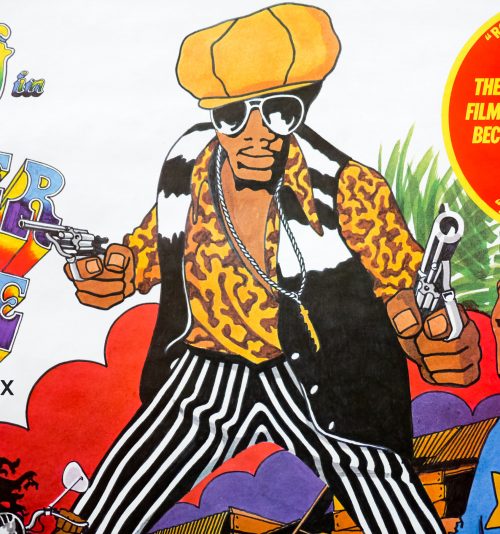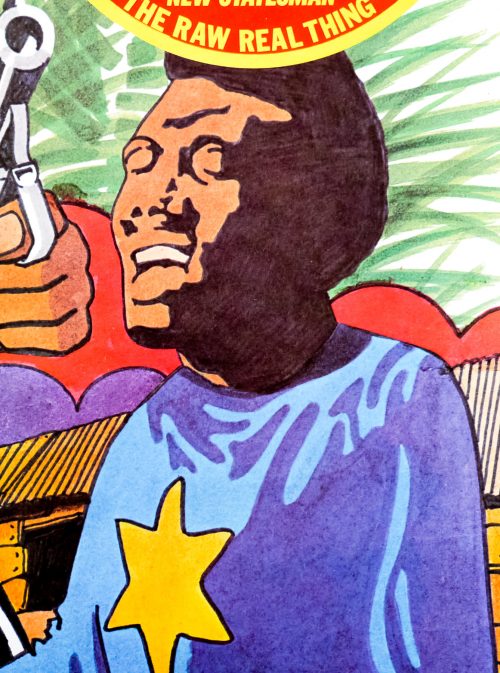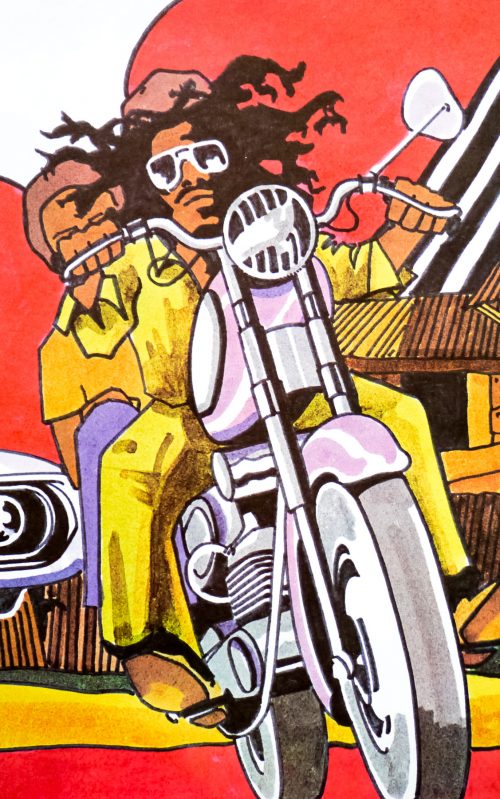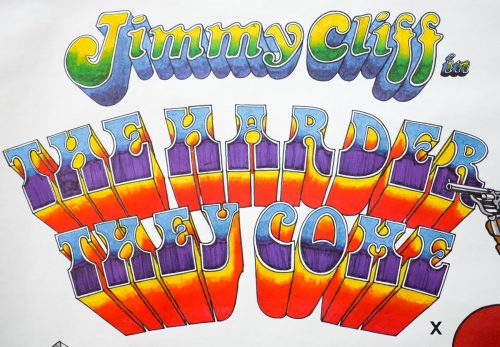- Title
- Predator
- AKA
- O Predador (Brazil / Portugal)
- Year of Film
- 1987
- Director
- John McTiernan
- Starring
- Arnold Schwarzenegger, Carl Weathers, Elpidia Carrillo, Bill Duke, Jesse Ventura, Kevin Peter Hall, Shane Black, Sonny Landham, Richard Chaves
- Origin of Film
- USA
- Type of Poster
- Quad
- Style of Poster
- --
- Origin of Poster
- UK
- Year of Poster
- 1987
- Artist
- --
- Size (inches)
- 30" x 39 13/16"
- SS or DS
- SS
- NSS #
- --
- Tagline
- It hunts for sport. It kills for pleasure. This time it picked the wrong man!
One of the best films of the 1980s and certainly one of the Austrian Oak‘s finest roles, Predator is a film I’ve seen more times than I care to remember. Directed by John McTiernan, who would go on to helm Die Hard the following year (arguably the greatest action movie ever made), the film is an excellent mix of gung-ho action and sci-fi horror with a truly iconic monster that has gone on to appear in several (not so great) sequels and spin-offs.
The story sees Schwarzenegger’s team of single-monikered, rough-neck commandos dropped into a dangerous South-American jungle ostensibly on a rescue mission. When they discover a series of butchered and skinned corpses it soon becomes clear that they’re dealing with more than just a bunch of gun-toting guerrillas and someone, or something, is following them through the jungle. The film features several memorable characters, including Native American Sonny Landham‘s Billy, a man-mountain with much-needed tracking skills and the first one to realise they’re not alone, and Bill Duke‘s Mac who memorably leads the charge with a mini-gun when one of his comrades is killed. Like many of Schwarzenegger’s films, Predator is eminently quotable and features countless memorable lines spoken by several of the characters – ‘If it bleeds, we can kill it!’
This quad was put together by a team at the FEREF design agency, including Stephen Laws, Frank Hillary and artist Brian Bysouth. This was one of the first posters by the artist to have been created with photo composition and not painted, as had been the case with his previous posters. In fact, his iconic painting for The Living Daylights was done the same year as this one. In 2012 I published an interview with Brian and the article can be read in full by clicking here. The other posters I’ve collected by him can be seen by clicking here.
